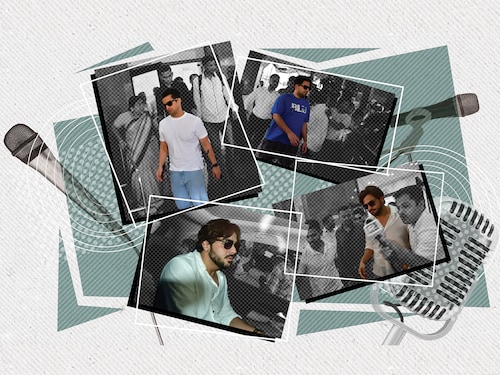Explained: The Freedom of Speech dilemma
The SC’s recent ruling asking comedians on India’s Got Latent to apologise opens up a debate on commercial speech and its restrictions


The Supreme Court recently directed stand-up comedian Samay Raina, host of the YouTube show India’s Got Latent, and four other comedians, to issue unconditional public apologies on their social media platforms. The directive came in response to their use of humour in one of the episodes mocking individuals with disabilities and rare genetic disorders, including spinal muscular atrophy (SMA) on the show.
After the episode was aired, the SMA Cure Foundation, a non-profit organisation, approached the Supreme Court with a petition against the comedians, accusing them of making insensitive and dehumanising jokes. As part of its ruling, the SC observed that, while freedom of speech is a fundamental right, it cannot be invoked to justify content that is commercial in nature and simultaneously infringes upon the dignity and sensitivities of vulnerable communities. The bench of Justices Surya Kant and Joymalya Bagchi emphasised that humour must not cross the line, particularly when it is monetised and disseminated to large audiences.
In addition to ordering the public apologies, the apex court directed the Union Government to submit proposed draft guidelines for regulating content on social media platforms. The guidelines, the court said, must strike a balance between protecting freedom of expression and ensuring such freedoms are not misused to demean or marginalise any section of society.
Freedom of Speech [Article 19 (1)(a)] is a fundamental right guaranteed by Constitution, granting all citizens the liberty to convey their thoughts and opinions through speech, writing, and visual media. However, this right is not absolute. Under Article 19(2) of the Constitution, it may be reasonably restricted in the interests of the sovereignty and integrity of India, public order, decency or morality, contempt of court, defamation, or incitement to an offence.
Commercial speech is any form of communication that promotes a product, service, or brand, which includes advertisements, sponsored content by influencers, satirical films or books that earn money, and even memes or comedy sketches that are monetised. In 1995, the concept was challenged in the Tata Press Ltd. v. MTNL case, and the court ruled that advertisements have informational value and they help people make choices. Hence, even if speech is commercial, it still deserves protection.
Apar Gupta, advocate & founder director of the Internet Freedom Foundation, says commercial speech is protected under Article 19(1)(a). However, the context and medium of distribution can shape the manner of regulation. He explains that for any restriction, whether it's for a film, print, broadcast, or online content, the constitutional test does not change, which means the restriction must be grounded in Article 19(2), be lawful, necessary, and proportionate. “Commercial speech is protected speech; context may justify tailored regulation, but only within Article 19(2) and with strict proportionality, hence vagueness and moralism are constitutionally out of bounds,” says Gupta.
Gupta explains that, according to previous court rulings, viewers are not to be treated as “weak minded”. “Collapsing satire into ‘commercial’ to dilute protection would be suspect unless a precise 19(2) ground and a proximate nexus to harm are shown,” adds Gupta. He further explains that there is a censorship risk if regulators rely on vague standards to target commercially distributed videos, books or films with provocative content. “Vagueness is unconstitutional,” says Gupta citing the 2015 SC ruling. In Shreya Singhal v Union of India (2015), the Supreme Court struck down Section 66A of the Information Technology Act, which criminalised sending “offensive” messages via electronic communication. The SC found the law to be unconstitutionally vague and held it had a chilling effect on free speech, which means it discouraged people from expressing themselves out of fear of legal consequences.
According to Gupta, when it comes to comedians and influencers, “if the Union frames guidelines for ‘influencer’ speech, they must satisfy legality, legitimate aim, and proportionality”. After the recent SC ruling to frame guidelines for social media platforms, Gupta believes it could have a chilling effect on comedians and influencers who monetise their content, unless standards are precise and anchored in 19(2). “Monetisation does not reduce constitutional protection as stated in the Tata Press case and it protects commercial speech because it informs the public and lawful expression cannot be penalised for being controversial.”
At the hearing which spoke about the formation of guidelines for speech on social media, the Supreme Court underscored the distinction between classical free speech and commercial speech, noting that when expression is monetised and widely disseminated, it carries a heightened responsibility. The bench clarified that commercial speech cannot claim unfettered protection under Article 19(1)(a) when it infringes upon the dignity of others, particularly vulnerable groups. It also observed that the Information Technology Act may accommodate penalties for such conduct, signalling a broader regulatory framework for digital content.
Gupta presses on the point that the judiciary should not re-characterise commercial speech through a moral lens rather than a constitutional one. “In Kaushal Kishor v State of UP, (2023), the SC underscored that speech can be restricted only ‘by law’ and only on enumerated 19(2) grounds; courts cannot add free-floating limits,” he says.
First Published: Sep 08, 2025, 14:02
Subscribe Now